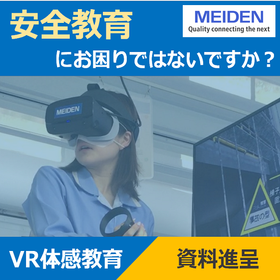★Necessary thermal design in the development stage of printed circuit boards ★A comprehensive explanation of the theory of thermoelectricity from scratch ★Essential course for improving reliability
Speaker Naoki Kunimine, President of Thermal Design Lab - Introduction to Thermal Fluid Analysis for Electronic Devices (Nikkan Kogyo Shimbun, 2009) - Thermal Design for Electronic Devices, 2nd Edition (Nikkan Kogyo Shimbun, 2006) - Complete Introduction to Thermal Design (Nikkan Kogyo Shimbun, 1997) Target Audience: Designers of printed circuit boards who want to master thermal design Venue: Kawasaki City Educational and Cultural Center, Conference Room 1 [Kanagawa, Kawasaki] 10-15 minutes walk from JR or Keikyu Line Kawasaki Station Date and Time: June 29, 2011 (Wednesday) 10:00 AM - 4:45 PM Capacity: 30 participants. *Registration will close once full. Please apply early. Participation Fee: 49,350 yen (tax included, including text costs) for up to 2 participants from one company ⇒ ◆ Invoices for 2 participants can be split into 2 parts (please indicate "request for invoice split" in the remarks section) *New members registering for the first time by June 14 will receive an early bird discount price of 44,100 yen. ◆ If 3 participants from the same organization apply, the fee is 61,950 yen.
Inquire About This Product
basic information
With the miniaturization of electronic components and the increase in the number of layers in printed circuit boards, most of the heat from electronic components has begun to escape through the substrate. Therefore, "thermal design of the substrate" has become extremely important for controlling the temperature of electronic components and ensuring their reliability. Furthermore, as the connections between the substrate and components have become finer and structurally weaker, various issues have arisen due to thermal deformation and thermal fatigue caused by high temperatures. Additionally, in recent power devices, large currents are flowing through resin substrates, exposing the substrate and components to high temperatures due to Joule heating. To address this series of thermal issues related to substrates, it is necessary for circuit and substrate designers to acquire basic thermal design knowledge and incorporate countermeasures during the design phase. This lecture will explain how to approach thermal design of substrates for those who do not have knowledge of heat transfer.
Price range
P2
Delivery Time
P2
Applications/Examples of results
1. Purpose of Thermal Design and Temperature Limiting Factors 1-1 Purpose of Thermal Design 1-2 Temperature Limiting Factors 2. Heat Transfer Knowledge Necessary for Thermal Design of Circuit Boards 2-1 What is Heat? 2-2 How Does Heat Move? 2-3 Heat Conduction 2-4 Convection 2-5 Thermal Radiation 2-6 Heat Carried by Material Movement 3. Heat Dissipation Paths of Electronic Devices 3-1 Heat Dissipation Paths and Thermal Resistance of Electronic Devices 3-2 Classification System for Thermal Countermeasures 3-3 Heat Dissipation Paths of Ventilated and Sealed Devices 4. Thermal Design of Printed Circuit Boards 4-1 Types and Characteristics of Printed Circuit Boards 4-2 Equivalent Thermal Conductivity of Printed Circuit Boards 4-3 Thermal Parameter Testing of High Heat Dissipation Boards for High Brightness LEDs (JPCA Standards) 4-4 Key Points for Substrate Heat Dissipation 4-5 Thermal Countermeasures for Low Thermal Conductivity Boards 4-6 Component Placement and Temperature 4-7 Thermal Countermeasures for High Thermal Conductivity Boards 4-8 Thermal Vias and Their Required Number 5. Joule Heating and Thermal Deformation of Printed Circuit Boards 5-1 Mechanism of Joule Heating 5-2 Calculation of Temperature Rise Due to Joule Heating 5-3 Current Values and Thickness of Wiring Patterns 5-4 Deformation and Thermal Stress Due to Heating 5-5 Thermal Deformation and Solder Defects During Reflow
Company information
Our company has developed its business from "seminar planning" to various forms such as "lecturer dispatch," "publishing planning," "technical consultant dispatch," "trend research," "business matching," and "business development consulting," in order to support clients in a wide range of fields including chemistry, electronics, automotive, energy, medical devices, food, and building materials. By doing so, we have advanced our company and opened up new markets. AndTech promises to continue listening to our clients' voices, entering the business areas and markets they desire, and to remain a company that is loved by our clients, as we share their challenges, think together, and forge new paths.




![[Series Volume 7] Column written by Naoki Kunimine, Thermal Design Consultant](https://image.mono.ipros.com/public/product/image/03e/2001197481/IPROS25468395333723263732.png?w=280&h=280)






